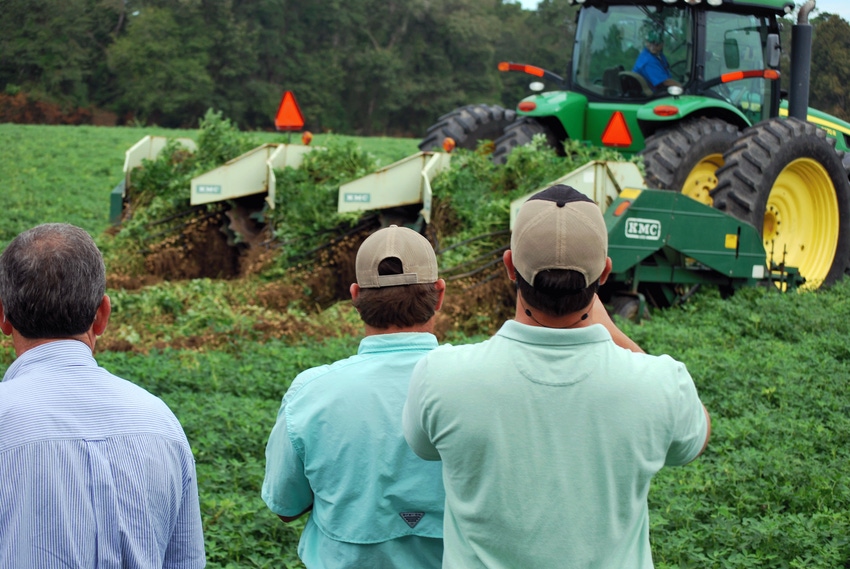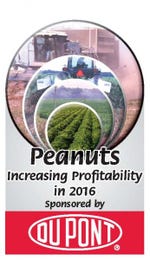June 16, 2016

From half a world away — through an app on a cell phone — a farmer can track the weather back home and schedule watering. Through software and a laptop or tablet, a farmer can tell you precisely how yields on one field fare against another and the effect of dozens of decisions made between planting and harvest.
In my role at the National Peanut Board, I spend more time with farmers in a week than many Americans do in a lifetime. And as someone who likes being on the cutting edge when it comes to new technology, I’ve been fascinated to watch them embrace new tools that help produce more peanuts and profitably manage their businesses.
So it hasn’t surprised me to witness how quickly growers have embraced and supported the use of new technology on the other end of the peanut spectrum: creating an open and receptive market for our products among consumers.
As peanut yields continue to increase, we’re challenged each year to move more peanuts. And just as it helps growers use inputs like water and fertilizers more efficiently, technology is ensuring the marketing side of the operation is reaching the right potential customer at the right time with the right message.
Maximizing returns means narrowing focus
Late last year NPB made a major shift in the group of people we defined as our primary target customer and an even bigger change in the tools we use to reach them. That’s a big deal, because while anyone may be a potential buyer of your product, marketers understand that you can’t be all things to all people.
Since we were founded in 2000, the majority of our marketing and communications efforts sought to educate and persuade moms of all ages to buy peanuts because of the power they traditionally wielded at the grocery store. And we did that — as most marketers did a decade and a half ago — primarily through print advertising in magazines.
It’s hard to see a time when moms won’t be important to food marketers, but all the data we continued to see said there was an audience even more important to the peanut farmer’s ability to sell his growing crop in years to come: Millennials.
Unlike their parents and grandparents who took PB&Js to school nearly every day, Americans between the ages of roughly 20 to 37 have grown up in an era where the increase in food allergies led some school systems (mistakenly, we believe) to ban peanuts.
By sheer numbers, the millennial generation has become a commanding force in the marketplace. Millennials, according to a report released by the U. S. Census Bureau last June, “now number 83.1 million and represent more than one quarter of the nation’s population. Their size exceeds that of the 75.4 million baby boomers.”
Their buying power and influence on others is impressive, too. Millennials are estimated to have more than a trillion dollars a year in direct dollars to spend. Even more interestingly, while their purchasing habits influence their children, this younger demographic exerts a strong influence on the food buying habits of their own parents, as well.
So how does technology factor into the picture? Look no further than your dining room table or any gathering of your family. If you are a baby boomer with millennial children or grandchildren and haven’t had to say “put the cell phones down,” you’re an exception in 2016 America.
Millennials are two and half times more likely to be an early adopter of technology than other generations. They are the first generation to get more of their information and news from online sources than from print or traditional news outlets. To reach millennials, a marketer needs to go where they are — Facebook, Twitter, Pinterest, Instagram — on phones, laptops and tablets.
Clearly, the era of a Walter Cronkite delivering the evening news to tens of millions of Americans at one time is long over.
The world is connected
Social media is how the world connects and communicates today — more instantly and, in most cases, more efficiently than ever. Any company or industry that wants to reach new customers has to have a thoughtful presence there.
Without a doubt, one of the biggest benefits of social media is that it fosters two-way communications. What that means is brands and organizations today don’t just push out messages about themselves and hope they resonate with audiences. Now, we can hear directly from their customers, monitor what they like and don’t like, and make changes. In fact, savvy organizations conduct “social listening” exercises before they start a new program to help shape their approach and messaging.
And listen is exactly what the National Peanut Board did. By using technology that can track and evaluate conversations on social media platforms, we learned how millennials were talking about peanuts and peanut butter and compared that chatter to conversations about other nuts and snacks.
Coupled with other research – conducted through another use of technology, the online survey – we came to the conclusion that convincing this market for peanuts and peanut products depended on our ability to demonstrate we’re relevant to them and their lives.
Enter the Peanut Vendor, a voice for all things peanut.
Much more a persona than a real person, the Peanut Vendor is a zealous champion for peanuts who lives by the creed that everything is better with America’s favorite nut. His No. 1 job is to break through the noise and bring peanuts to the people.
If we want people to buy peanuts, we have to make them more passionate about peanuts. And to build passion for peanuts, we need to show the passion for peanuts.
What’s the end game of all this passion? Simple. To ensure it eventually becomes infectious, leading a generation of Americans who have more choices than their predecessors to realize the best choice for snacking and eating has been right under their nose the whole time.
We introduced the Peanut Vendor (@PeanutsHere) to the world on Jan. 4 on Twitter with a year’s worth of predictions and resolutions for every day of the 2016 calendar year. Every day since then, he goes to work to build excitement for USA-grown peanuts by tossing peanuts into relevant, social conversations online as if Twitter were a giant baseball stadium.
The early January campaign was a success, generating more than 28 million total impressions that first week, as well as earning press coverage in trade publications that review marketing efforts. More importantly, the content performance of the Peanut Vendor’s Social Almanac surpassed Twitter’s averages for consumer-packaged goods, food and non-profit engagement rates. During National Peanut Month in March, Peanut Vendor also jumped into conversations on Instagram, and will have a home there, as well.
Tracking progress
On the farm, you can’t plant your crop in the spring and expect to have a bumper harvest in the fall, following the same exact schedule and practices you did the year before. Or the year before that, either. Too many variables get in the way, and not all can be planned for.
The same goes true for marketing. Before the digital age, it was possible to evaluate how effective your efforts were working while a campaign was underway, but it’s nowhere like it is today.
It wasn’t long ago that a brand or organization would develop a plan and create content ― such as print advertising ― push it out to their audiences and wait and hope for results. Now, thanks to social and digital platforms and tools, we can make course corrections along the way. For Peanut Vendor, for example, we can tell almost instantly which messages and images millennials love and which ones they don’t. So the next content we push out will be even stronger. No more waiting until next year to make changes.
As a marketer, the many changes brought to our work by new technology have been nothing short of mindboggling. There’s no falling asleep at the switch.
At the same time, the work we do and how we do it has never been more exciting. Ask a peanut farmer why he grows peanuts and he’ll tell you he loves to see how it makes people feel. Every day, thanks to technology, we witness countless people posting pictures of their best PB&J creation ever, or mentions of how sharing a bag of peanuts with their dad at the ballpark made the day just a little bit better. Each mention gives us just a little more insight into the passion peanuts evoke.
And it makes our day better, too.
You May Also Like




